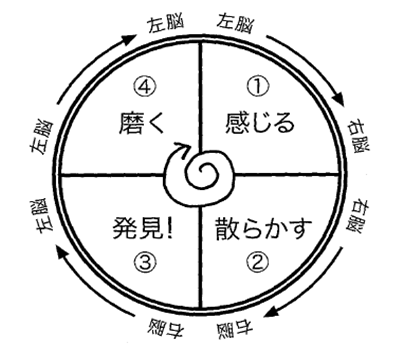Back in elementary school, the standard way to give chocolates at my school was to slip them into a hatbox or desk drawer. I suppose it was because I hadn't even properly looked at my own face in the mirror back then. I remember young Yamada fidgeting and fidgeting, searching for chocolates that probably weren't even there.
Ever since, Valentine's Day has been a struggle for me. Recently, I was scolded by the ladies, "Huh? Even with obligatory chocolates, returning the favor is proper etiquette!" leaving me thoroughly confused. I know I should do something, but I have absolutely no idea what to give in return.
Well, this has turned into a middle-aged man's rant, but anyway, our "Bad Nori Snack" made with Marutoku Nori in Hiroshima has a limited-time product out. This team is totally bad nori, huh? (laughs)

Giri Nori Snack
Thanks to everyone, I've been getting more invitations lately to "challenge ourselves to develop products that defy common sense together." As an ad guy, I can't directly solve each industry's tough problems, but I'm well-versed in the kind of thinking that sparks "Oh, that's an option!" I offer that methodology and work together with various manufacturers, rolling in the mud and getting back up. And what I'm careful about in those situations is "not leaving the ideas up to others."
Take food product development, for example. Sometimes, a planner will tentatively decide on a vague "idea/concept" like "this might be the direction," and then immediately hand off the flavor development to a famous chef. Since they're professionals, even if you ask them to create something like "a 'Dressing of the Earth' packed with vibrant vegetables grown in Gunma's fields" or "a 'Sunshine Mayonnaise' made with free-range chicken eggs," they'll likely come up with a reasonably tasty recipe. But if you hand over the entire execution, you'll never get a product that makes you think, "Why didn't I think of that?"

Spinning Thoughts
In the " Circular Thinking " approach that underpins this series, we define "ideas/concepts" as "new perspectives that solve problems to achieve goals." To develop them, we believe you must repeatedly move back and forth between the target and the specific solution in "scatter mode." For example, approaches like rapid prototyping—where you "think while building" prototypes—are extremely effective.
However, if you completely outsource the creation of these concrete solutions to someone else, you lose the opportunity to think while building: "Why is this good?" or "Why doesn't this work?"
Frankly, both "Earth's Dressing" and "Sun's Mayonnaise" are far too vague to qualify as "new perspectives that solve problems." If concrete solutions like "Oh, that's an option!" emerged from such vague terms, the credit belongs not to the planner but to the chef who created the solution. Calling this idea generation reliant on others is hardly unfair.
Of course, I don't deny the value of consulting experts in their field, but there are limits to the division of labor where "I'm the thinker, you're the doer."
Initiatives like "senbei developed with high school students" or "new local gourmet food conceived by university students" abound. While some offer genuinely insightful perspectives, cases that feel underdeveloped often share a common pitfall: falling into this division-of-labor trap.
Now then. Next time, I'd like to think a little about "product development from the consumer's perspective," which is often spoken of as an overwhelmingly righteous approach.
Enjoy!




